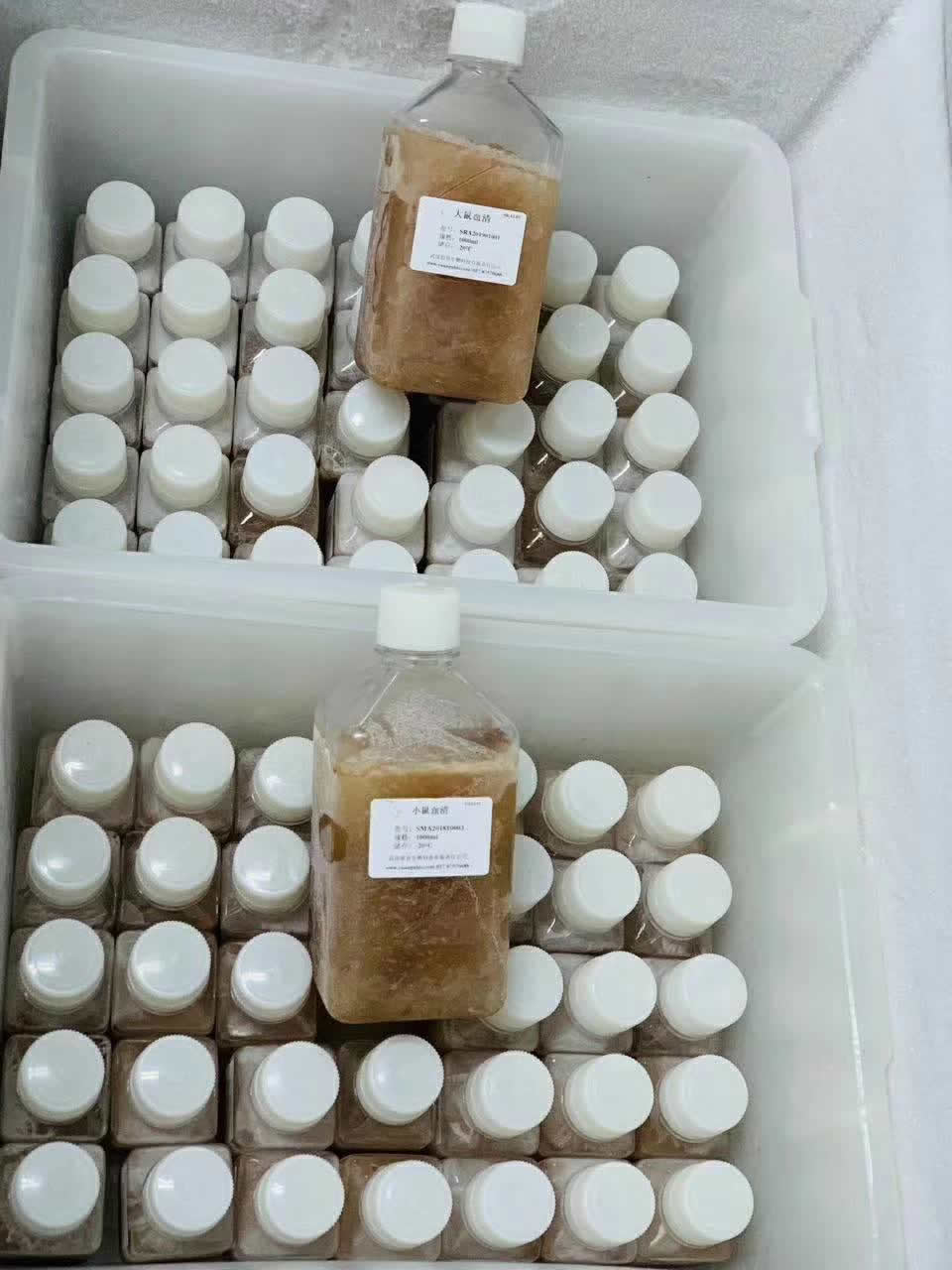
Specification of our mouse serum
- Serum total protein: 3.5-8.0%(w/v) or 35mg/ml-80mg/ml (tungstic acid precipitation). Serum total protein is a complex mixture of various proteins.
- Sterility test: negative (cultivation).
- PH: 6.9-8.0.
- Mycoplasma: negative (cultivation).
- Hemoglboin: ≤0.05%(w/v) or ≤0.5mg/ml (Hemiglobincyanide, HiCN).
- Endotoxin: ≤50EU/ML (gel).
- 0.1μm sterile filtration.
Notes
Please note the mouse serum we supply is for scientific research experiments only, not available for clinical research.
Our mice serum is collected from healthy mouse blood, after aseptic collection, separation, and microporous filtration. It is a clear liquid with no phage, low endotoxin, no hemolysis, no foreign body, which is suitable for laboratory or biochemical research-related experiments to meet the various needs of different scientific research experiments.
The blood was collected from the mouse in a closed puncture manner, 3 times 100nm filtration, packaged in a purification workshop.
The mouse serum passed strict testing to ensure that there is no mycoplasma and the detection of bacterial viruses. It is in accordance with the above specification, meets international testing standards.
What is normal mice serum
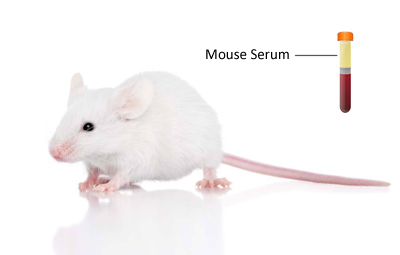
The mice serum is a very complex mixture of mouse plasma removed from fibrinogen. Although most of its components are known, some are still not clear. The composition content of mouse serum often varies with gender, age, physiological and nutritional conditions.
In some cases, the mouse serum is a colloidal liquid containing fibrinogen in the plasma. It can maintain the normal viscosity, pH, and osmotic pressure of the blood. The composition of mice serum is water and various chemical components. These chemical components include albumin, α1, α2, β, γ-globulin, triglycerides, total cholesterol, alanine aminotransferase, and so on. The mouse serum contains various plasma proteins, peptides, fats, carbohydrates, growth factors, hormones, inorganic substances, etc. These substances are physiologically balanced to promote cell growth or inhibit growth activity. The quality standard we follow is the endotoxin content is less than 50EU/mi.
Uncertainties of mouse serum
Although the research on the composition and effect of mouse serum has acquired significant progress, there are still some uncertainties.
- There may be hundreds of compositions in the serum. The exact composition, content, and functions of the serum are still unclear, especially some of the peptide growth factors, hormones, and lipids that researchers have not fully understood.
- Collect mouse serum in batches, which varies widely from batch to batch, and the storage period of the serum is up to one year. Therefore, it is complicated to ensure each serum collection’s similarity, which limits the standardization and continuity of the serum-related experiment.
- Volatile substances are not easily be removed from the serum, which is considered to bring difficulties to experiments.
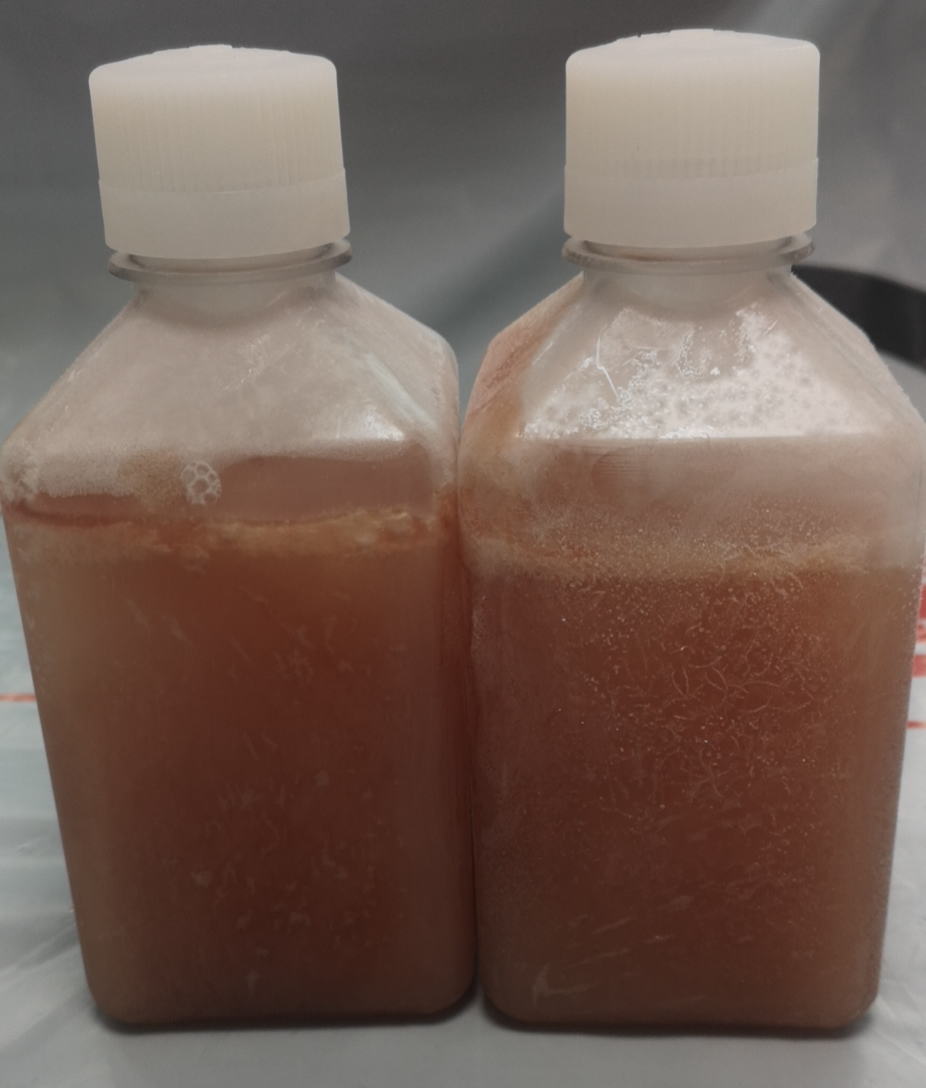
Preservation of mouse serum
- Store the mouse serum in a low-temperature refrigerator at -20°C to -70°C for long-time storage.
- Do not store the serum in a refrigerator at 4°C for more than one month.
- Due to the volume of serum will increase by about 10% when it freezes, before freezing the serum into a low-temperature refrigerator, a particular volume of extra space must be reserved to avoid cracking glass bottles.
- Heat inactivation is to inactivate complement components in the serum. The operation is to heat the completely unfreezing serum at 56°C for 30 minutes. Shake well during the heat process.
- If heat inactivation temperature is too high, heating time is too long, or the serum’s shaking is not well, which will increase the sediments.
- The heat inactivation most likely will cause a significant increase of sediments in the serum. It will also affect the quality of serum, so we do not recommend doing so unless necessary.
- Complement components may affect those reactions: cytotoxicity, contraction of smooth muscle cells, mast cells and platelets release histamine, enhance phagocytosis, and promote lymphatics Cells and macrophages undergo chemotactic and activation.
How to remove the flocculent precipitates
- Dispense the serum with floc into a sterile centrifuge tube and centrifuged at 3000 rpm for 5 minutes. Then add the supernatant into the culture medium and filter. We do not recommend removing these flocculent precipitates by filtration directly, as it may block the filter membrane.
- Precipitation floc in serum will not sacrifice the serum’s quality: because fibrin will cause it in the serum after lipoprotein denaturation and unfreezing.
- The floc sediments may not affect the quality of the serum, and you may leave it alone.
- Small black spots under the microscope: the formation of precipitates will increase significantly after heat inactivation. Some precipitates look like tiny black spots under the microscope. They might mistakenly think that the serum is contaminated. Under normal circumstances, those tiny black spots will not affect cell growth. Replace with another batch of serum if the serum is suspected with quality issues.
Gradually unfreezing method to avoid precipitation
- The unfreezing of iced serum needs to follow the gradual method:
- Put the serum from -20°C low-temperature to -2°C refrigerator, then to 4°C refrigerator to dissolve for one day.
- Then move it to normal temperature and re-pack it after completely unfrozen of the mice serum. During the unfreezing, shake the serum gently (make sure no air bubbles are caused) so that the temperature and ingredients are even and reduce precipitation.
- Do not unfreeze the serum from -20°C to 37°C directly, which will cause precipitation of protein aggregation due to temperature changes too sharply.
- Usually, the serum is sterile, and no need to filter also. If found suspended matter in the serum, filter the serum together with nutrient solution, do not filter the serum without the nutrient solution.
- Do not keep the serum at 37°C environments for a long time, which will cease the serum’s active ingredients to be effective, then damage unstable components in the serum.
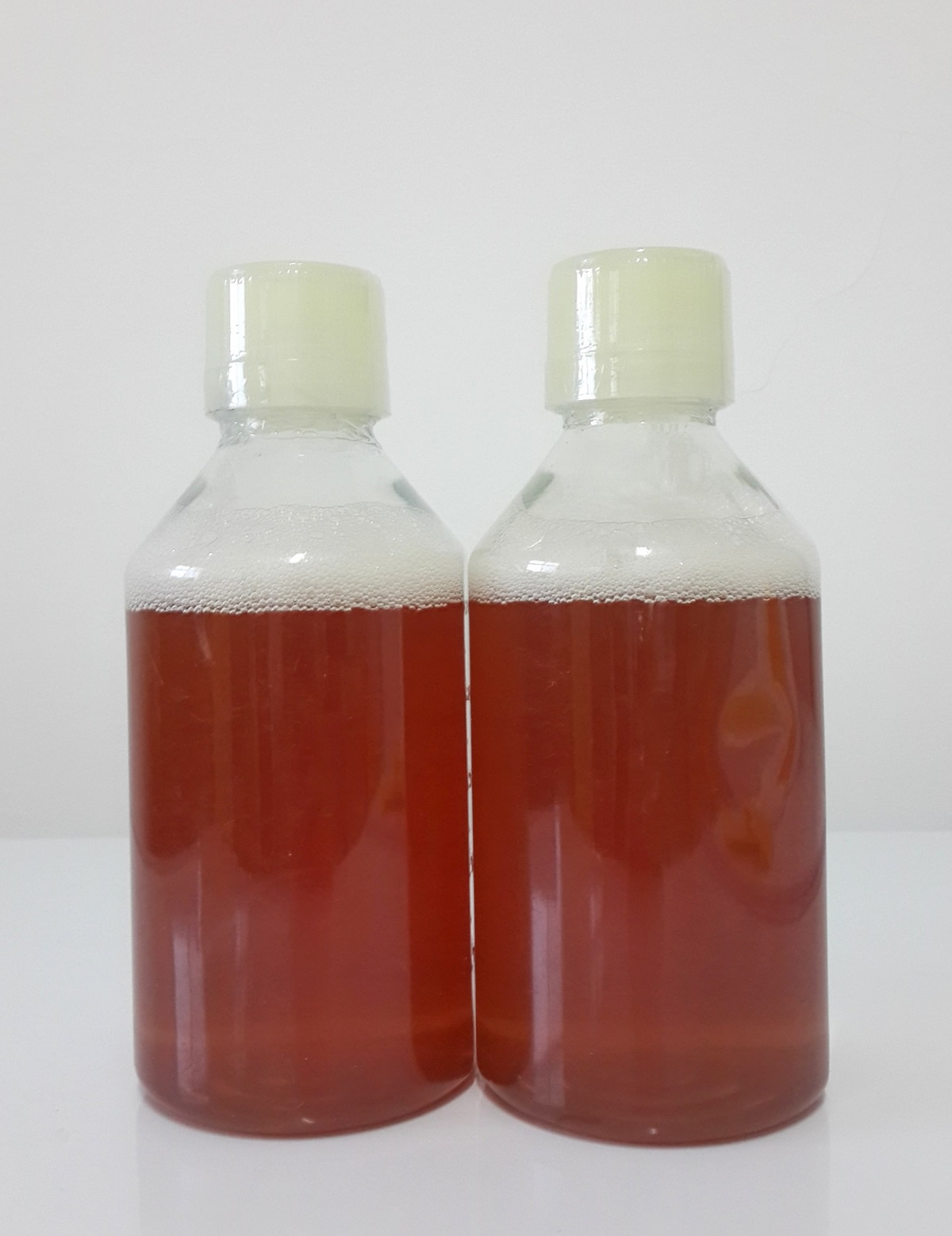
Application of the mice serum
- Cell biology and immunology
- Available for mice lymphoma research
- For cell culture and immunoassay
- Apply to most immunological experiments, as a blocking solution or blank control
Production process
We use mouse blood as the original material after batch collecting and mixing, a 0.1μm microporous filter for aseptic filtration, and bottle packaging.
Mouse serum sterile filtration and packaged into bottles at low prices.
Each batch of serum is subject to quality control from raw materials to finished products. Adopt advanced equipment in strict accordance with the China Pharmaceutical and Biological Product Inspection Regulations. As one of China’s largest serum suppliers, we ensure every batch of mouse serum is of excellent quality and reasonable price.
Mouse serum liquid
Mixed serum from different batches, collect from 6-7 years KunMing (KM) mouse. Valid period is 5 years.
Lyophilized powder
We also supply lyophilized powder of the normal mouse serum
Functions of mouse serum
Can provide below ingredients:
- Provide essential nutrients: amino acids, vitamins, inorganic substances, lipid substances, nucleic acid derivatives, etc., which are necessary for cell growth.
- Hormones: insulin, adrenocortical hormones (hydrocortisone, dexamethasone), steroid hormones (estradiol, testosterone, progesterone), etc.
- Provide growth factors: fibroblast growth factor, epidermal growth factor, platelet growth factor.
- Binding protein: the function of binding protein is to carry critical low-molecular-weight substances, such as albumin to carry vitamins, fats, and hormones, and transferrin to take iron. Binding proteins play an essential role in cell metabolism.
- Provide contact factor (Hageman factor) and stretch factor to protect cells from mechanical damage.
- Provide some protection to cells in cultures: some cells, such as endothelial cells and bone marrow-like cells, can release proteases, and serum contains anti-protease components, which play a neutralizing role. The mouse serum is to stop trypsin digestion due to trypsin has been widely used for the digestion of anchorage-dependent cells. Serum proteins form viscosity to protect cells from mechanical damage, especially when stirring in suspension culture; viscosity plays a vital role.
The serum also contains some trace elements and ions, which play an essential part in metabolic detoxification, such as SeO3, selenium, etc.
How to collect serum from blood
Do not add anticoagulant into the blood. Place the blood in a centrifuge tube or a vessel that can be centrifuged on an inclined surface at 20-30°, and leave it at 37°C or indoor temperature to coagulase. After the blood is clotted, centrifuge it at between 3000rpm and 6000rpm for 5-10 minutes, then the supernatant is the serum. Pipet and bottle the supernatant; be careful not to suck out the cell components.
The process of filtration is aseptic to ensure the high quality of the mice serum.
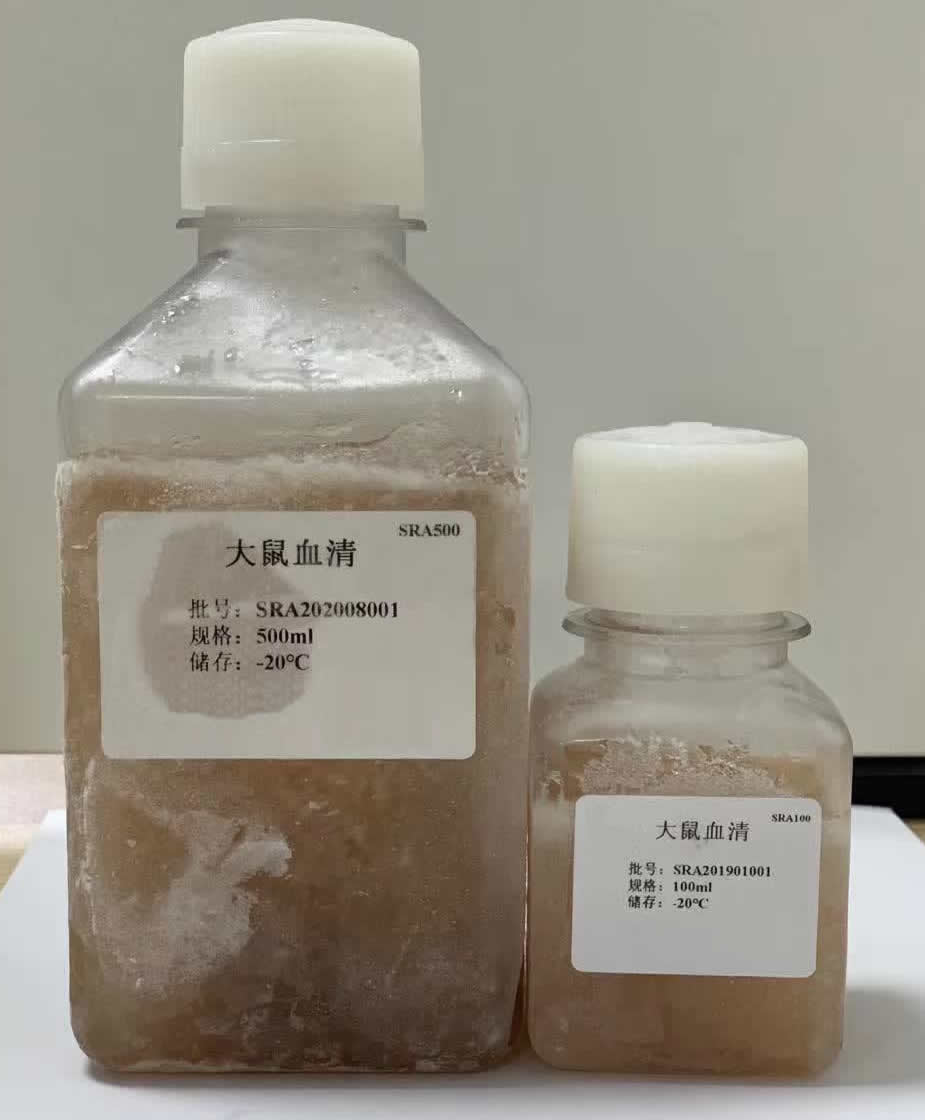
How to prepare plasma
Add a certain proportion of anticoagulant (proportion of anticoagulant:blood=1:9) in the container together with blood. Then centrifuge it at between 3000rpm and 6000rpm for 5-10 minutes. The obtained supernatant is plasma. When sucking out the plasma, use a capillary pipette to begin from the liquid surface and gradually suck it down. Do not pipet the cell components.
How to prepare platelet-rich plasma (PRP)
Centrifuge the blood at 800rpm for 5 minutes, and the supernatant is platelet-rich plasma.
Note: Drip the blood down when collecting blood, do not let the blood touch the test tube’s wall. If the blood collection tube is unclean, hemolysis probably happens. During the blood collecting, avoid debris such as animal hair and water hanging on the tube wall. If the centrifugation speed is too high also can cause hemolysis.
How to avoid serum hemolysis
Mouse serum is an essential indicator for experimental testing, and its serum quality is critical. If hemolysis occurs during blood collection, it will seriously affect the accuracy of experiments. Therefore, purity is the guarantee of mouse serum-related experiments.
Generally, for high volume blood collection, eye extraction and cardiac puncture methods are practical approaches. The cardiac puncture method requires specific techniques to apply because needle-point is challenging to locate accurately. Therefore, eye-extraction is mainly used in the experiment for a while to make sure the serum collection is sufficient.
But blood collected by this method sometimes is hemolytic, which may be due to red blood cell fragmentation caused by mechanical damage during blood collecting. Here we propose a tiny tip that can avoid this heme problem.
The method is to discard the first and the last drop of blood, do not collect them. When extracted the eyeball, collect the second drop of blood. In other words, collect the blood without mechanical damage so that after centrifugation, the serum will be clear and no hemolysis.
